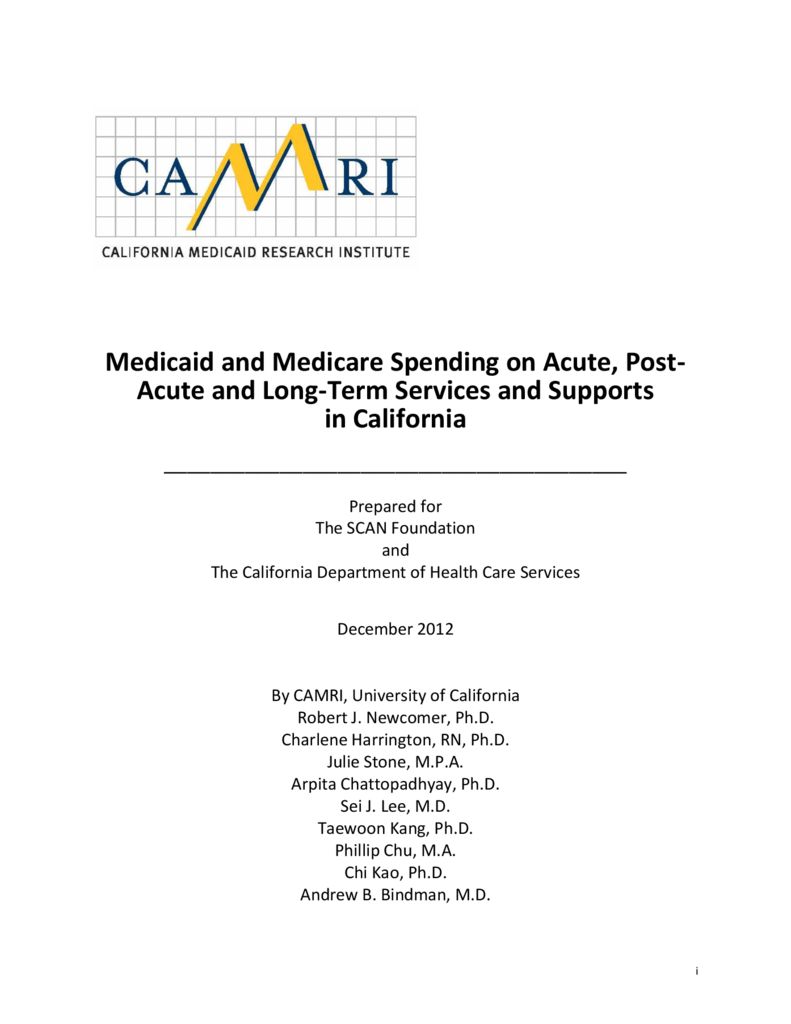CAMRI: Medicaid and Medicare Spending on Acute, Post-Acute and LTSS in California
summary
This is the third report coming from the California Medicaid Research Institute (CAMRI) project entitled: Comprehensive Analysis of Home- and Community-Based Services in California. The report describes Medicare and Medi-Cal spending for those beneficiaries using long-term services and supports funded by Medi-Cal.
Date Updated: 12/05/2012In an attempt to slow down growth in health care spending, state and federal governments have implemented a number of cost-containment strategies in recent years. Medicaid and Medicare expenditures are major contributors to the long term fiscal challenges facing the public sector. Medicaid, financed by both federal and state governments, pays for acute, post-acute, and long term services and supports (LTSS) for low-income seniors and certain individuals with disabilities, among others. Medicare, financed by the federal government and premiums, pays for acute and post-acute health care services for those Medicaid beneficiaries who are also enrolled in Medicare (known as dual eligible and hereafter referred to as Medicare-Medicaid Enrollees, or MMEs)…
Download the publication for all visuals and complete references.
Continue Reading
The California Medicaid Research Institute (CAMRI) developed an integrated and longitudinal database containing Medi-Cal and Medicare claims and assessment data of LTSS recipients in California in 2008. CAMRI’s integrated database provides a unique opportunity to look at characteristics and program spending across the entire care continuum for beneficiaries with LTSS needs within Medi-Cal and for dual eligibles across Medicare and Medi-Cal. This report focuses on LTSS use and spending in the eight duals demonstration counties.
On March 27, 2013, the State of California and the Centers for Medicare and Medicaid Services (CMS) formalized a Memorandum of Understanding (MOU) to establish a Federal-State partnership to implement the Dual Eligibles Integration Demonstration, also referred to as Cal MediConnect. This Fact Sheet provides background information about Cal MediConnect and summarizes the key points of the MOU.
This report describes nursing home stays of two of California’s most vulnerable populations: those who are dually eligible for Medicare and Medi-Cal and Medi-Cal only beneficiaries. Findings suggest the need for improved coordination between health care and long-term services and supports systems in order to more efficiently and effectively provide services to meet people’s needs.


